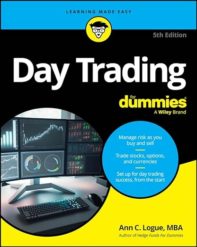Alan Greenberg, often known as Ace, died recently. He had been the chairman of Bear, Stearns and was known for his dictates to his employees. One of the most famous was the Ace Greenberg Paper Clip memo, in which he ruled that paper clips should not be thrown away. Each employee received one box of paper clips upon joining the company, no more.
Bear, Stearns, of course, failed in early 2008, the first corporate calamity of the financial crisis.
Now, there’s no reason to throw out paper clips. They are almost infinitely reusable. Several years ago, I bought a large bag of used paper clips for about a quarter from a company liquidation sale. My grandchildren and great-grandchildren will be using them. Throwing them out is wasteful.
But here’s the thing – although paper clips are reusable, new ones are really cheap. If someone were asking for advice on how a company can save money, reusing paper clips wouldn’t be on the top of the list. In fact, concentrating on little things can annoy employees, and you’ll lose more money if the people who do the work are being inefficient either from a lack of materials or pure spite.
I run a thrifty household, relatively speaking, and I run a small business. For both, the strategy (inspired in large part by Amy Dacyczyn) is to keep the spending consistent. In over 20 years of marriage (!) my husband and I both have received huge bonuses, faced bouts of unemployment, been self-employed, and occasionally scaled back our hours when family obligations required it. We’ve had the occasional surprise expense, too. Through it all, we keep our spending below our combined income in the worst years. Other than our mortgage, we have not taken on any debt. Now, we realize that not everyone can do this as easily because not everyone has had the benefit of those few huge bonuses or a good income in an average year.
Still, our life doesn’t fluctuate much with our income. In the good years, we beef up savings and make investment purchases, like energy-efficient windows. We may splurge on a great vacation, too. In a lean year, the money that goes into savings may be smaller, and vacation may be an overnight trip to an amusement park – but we will go on vacation, because that is important to us. By keeping our spending consistent, our lives stay consistent. We don’t feel deprived. Kids need consistency at home, but you know what? So do adults.
At work, I will spend money where I see the payoff in terms of time savings or future income. My office equipment is ergonomic – some bought second-hand, some bought with Office Depot coupons, and a lot purchased at full price. If I am in pain, then I can’t work. If I can’t work, I can’t bring in money. I reuse paper clips, but it would take many lifetimes for savings from paper clips to cover the cost of even a second-hand Aeron chair – but the Aeron is important for productivity.
My husband and I were both raised by parents who were careful with money. Beyond that, true frugality takes practice. My husband’s summer hobby is our vegetable garden, and a good garden takes a long time to establish. I’ve learned that little boys can tear out the knees of cheap jeans in a month, so it’s worth buying a brand name. On the other hand, perfectly fine Ralph Lauren Polo shirts can be had for $6.00 each at a private school’s annual rummage sale, so it’s pointless to buy new golf shirts of any brand.
Despite the hundreds and thousands of resources on frugal living and personal finance, most people struggle with it no matter where they are.
And here’s the thing – it’s a lot easier for a family to live frugally than for a corporation, a government, or a non-profit organization. To begin with, the hierarchy is simple. The parents are equals; the children are subservient to the parents. A kid can’t hire a lobbyist who proffers campaign contributions to guarantee that Santa Claus brings a PlayStation 4. The parents don’t have to answer to shareholders who want to know why income is not growing at a steady 15% rate year after year. The family doesn’t have this sense that it’s saving the world, and what’s an extra few dollars when the whole planet is at stake?
Without practice, and with political pressures, it’s hard for businesses, governments, and non-profit organizations to cut spending. My family lives a frugal life so that we can have consistency in our daily lives and have money for things that matter to us: travel, education, and a 120-year-old house in a great neighborhood. In exchange, we are happy to have one car that is replaced every 10 years, eat store-brand groceries, grow and freeze vegetables, and wear second-hand golf shirts.
Even a kid can understand the tradeoffs: “Your music lessons cost $30 a week. This is how much money we save by buying the store brand and using coupons at the grocery store. It is more important to your father and me that you take music lessons than that you eat Kellogg’s cereal.”
What was Ace Greenberg’s point with the paper clip order? The savings were negligible, and the memo distracted from the work at hand. Bear, Stearns failed because of poor risk controls, not because it spent too much money. The company’s frugality was penny-ante, control-freak stuff, not a tactic for meeting a larger goal.
Without practice and without strategy, too much corporate cost-cutting is either pointless or else it slices into muscle and bone. In an attempt to maintain consistent earnings growth for shareholders in the short-term, too many businesses wreak havoc on employees and customers. They make symbolic cuts that cause big irritation but save little money (no more doughnuts on people’s birthdays!) without addressing things like the CEO’s pay. They cut customer service and research and development, then wonder what they’ll do to generate 15% growth in five years.
We need a cultural shift. We need executives who are willing to accept less pay and shareholders who will reduce expectations in slow years. We need more citizens who understand that if you have to hand out campaign contributions for certain government preferences, those items are probably not going to pay for themselves. We need more non-profit volunteers and staffers who think about long-term stability.
We need more people in this country who understand the difference between intentional, consistent, and frugal spending and pinching pennies for the heck of it.
By the way, some of the best investors I’ve known are really cheap in their personal lives. They understand that a two-year-old luxury car purchased off lease is almost as good as a new luxury car but at a much lower price; they understand that shares in a good company purchased on a day when the market is weak are just as good as the same shares purchased on a day when the whole market is up. There’s a lot to be said for frugality as a long-term habit.




Excellent article! I remember years ago reading that the previous Queen of England bought many silver doo-hickeys to put at the end of a toothpaste tube so you can squeeze out every last bit. Again, nothing wrong with not wasting toothpaste, but these little acts of frugality really can be foolish “frugality theater” in the end.